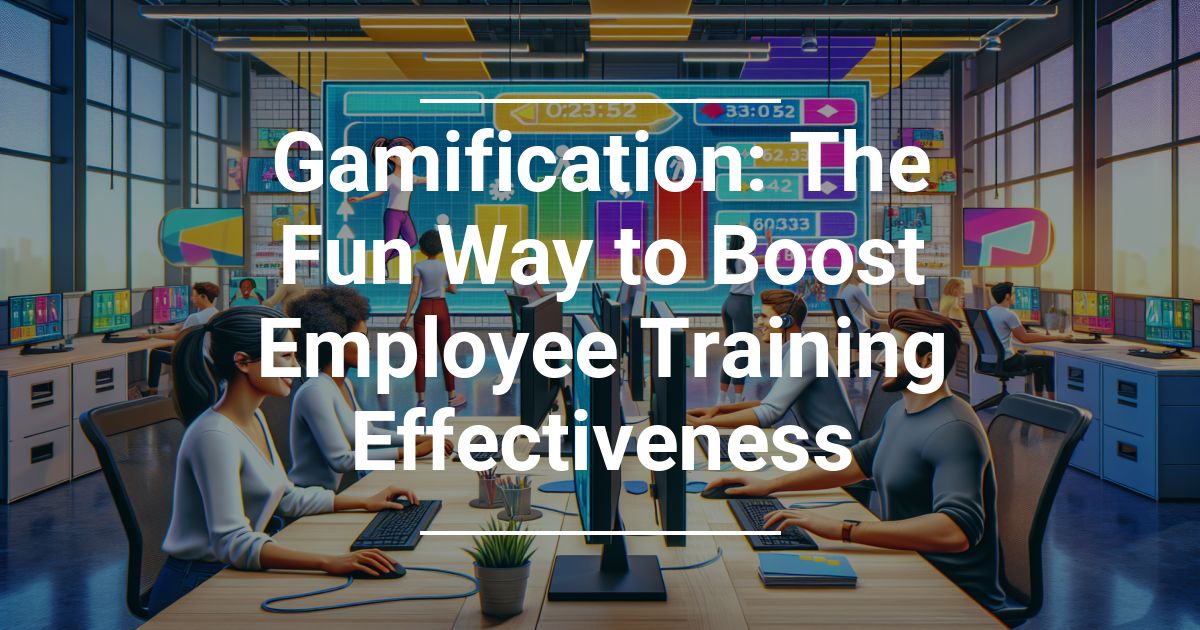 As a business owner or manager, you’ve probably considered gamification for customers and clients to get them to interact with your company and purchase more frequently. However, did you know this strategy also motivates employees to fulfill tasks they’re already doing for higher employee engagement and better company growth? Below, we’ll relay why this is so, but first, what is gamification?
As a business owner or manager, you’ve probably considered gamification for customers and clients to get them to interact with your company and purchase more frequently. However, did you know this strategy also motivates employees to fulfill tasks they’re already doing for higher employee engagement and better company growth? Below, we’ll relay why this is so, but first, what is gamification?
How Gamification Works
Have you ever noticed gamers aren’t just looking to keep their hands busy or explore a different universe? They become goal-oriented while staying alive during a zombie apocalypse or solving a time-tentative puzzle. By competing with others on a scoreboard, instant gratification comes with successful games and higher scores.
Gamification is not much different in business since business owners implement point systems, leaderboards, and badges for customers or employees in return for more engagement, participation, and motivation. With workers, incorporating game-design elements also helps with training, among other things, which we’ll delve further into.
The Benefits of Employee Engagement in Different Scenarios
Below, we’ll explain how gamification plays a role in employees’ performance in different cases.
Improving the Learning and Development Process During Training
Traditionally, training involves reading tedious documents and observing countless slides to prepare workers for their company roles. However, the information is usually dense, making it difficult to follow and boring, leaving the workers with a limited understanding.
Gamification has revolutionized learning and development by introducing interactive, educational games that allow workers to immerse themselves in a game-like environment. The hands-on experience can increase employee engagement by getting them involved. Moreover, they retain more information by playing in real-world scenarios, making them better employees.
Developing New Skills and Better Understanding of Real-World Situations
However, those real-world scenarios do more than teach workers about their company roles. They simulate life-like situations during an employee’s introductory training course or ongoing yearly training sessions. That way, employees put their training to the test and see if what they’ve learned helps them to take on common challenges in practical situations.
Furthermore, employees also gain skills with real-world applications, such as problem-solving and critical thinking. They test their newfound skills during educational games, experimenting freely without fear of real-world consequences. They take risks or chances on their judgments and learn from them, bringing this information into their jobs.
Increasing Employee Productivity and Performance in a Measurable Way
Even after your employees know how to tackle their jobs, you still want them to remain engaged, so implementing leaderboards or point systems alongside badges and other rewards better motivate them to complete tasks. They’ll create goals for themselves, such as beating a fellow employee’s high score and making them enthusiastic about work.
Aside from creating more focus and motivation for increased productivity and performance, gamification helps track different employee engagement levels. Employers uncover hard workers and those who aren’t contributing as much by measuring employee engagement.
Sometimes, it’s difficult to determine if gamification is working. So, if you’re considering incorporating gamification into your company system, don’t forget the occasional pulse surveys for optimal and focused employee feedback!


